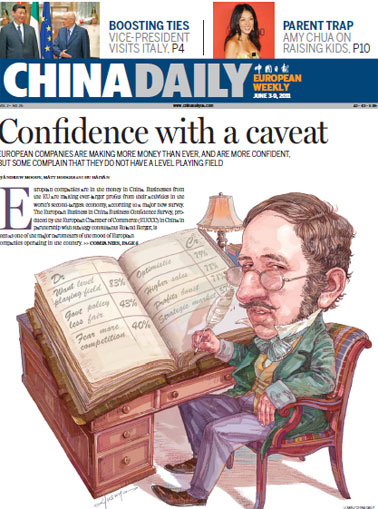Editorials
Saving intangible treasures
Updated: 2011-06-07 08:00
(China Daily)
Why do we need to safeguard our intangible heritage?
This is a valid question, especially as China's first Law on the Protection of Intangible Cultural Heritage (ICH), including traditional oral literature, performing arts, craftsmanship, medicine and folk customs, took effect on June 1.
| ||||
Statistics show that China's total ICH resources amount to nearly 870,000 items. The country has 1,028 State-level ICH items and 1,488 State-level representative heirs of their traditions. Twenty-eight cultural elements in China are inscribed on the United Nations ICH list and six on the list of cultural traditions in need of urgent protection.
Intangible heritage should be not only about understanding reality; it should also be about shaping it.
Our intangible cultural heritage needs to be protected from the pressures of time and the vagaries of change.
The Meshrep tradition found among the Uygur people in the Xinjiang Uygur autonomous region was added to the list of UN ICH in need of urgent safeguarding in November. A complete Meshrep event includes a rich collection of traditions and performance arts, such as music, dance, drama, folk arts, acrobatics, oral literature and games.
If we allow our intangible heritage to deplete at rates similar to those of our natural resources, we will lose a unique way of understanding reality and interacting with our environment.
Many parts of the country are deeply interested in getting a place or a cultural element on the State or UN list. In so doing, some have gone into debt. They assume such a listing will create a source of revenue.
There are examples for these hopefuls to envy. Tourism is booming and some sites' serenity is being overwhelmed by crass commercialization, from Las Vegas-style shopping malls to gaudy theme parks. These sites are being exploited for immediate benefit. If they survive this generation, they will be distorted beyond recognition.
As for cultural assets, they are being turned more into "stuffed specimens" that are displayed in museums and libraries.
Intangible cultural heritage represents values, expertise, skills, knowledge, understanding and information sustained over time through memory and transmitted orally or through practice within a community and its neighbors and from one generation to the next.
So much attention is being given to the pressing issues facing the country today, such as poverty, inadequacies in the education system, corruption and other irregularities in the government, the efforts to raise awareness on the importance of promoting and protecting our national heritage are all too frequently overlooked.
(China Daily 06/07/2011 page8)
E-paper

Harbin-ger of change
Old industrial center looks to innovation to move up the value chain
Chemical attraction
The reel Mao
Improving app-iness
Specials

Vice-President visits Italy
The visit is expected to lend new impetus to Sino-Italian relations.

Birthday a new 'starting point'
China's national English language newspaper aims for a top-notch international all-media group.

Sky is the limit
Chinese tycoon conjures up green dreams in Europe with solar panels




